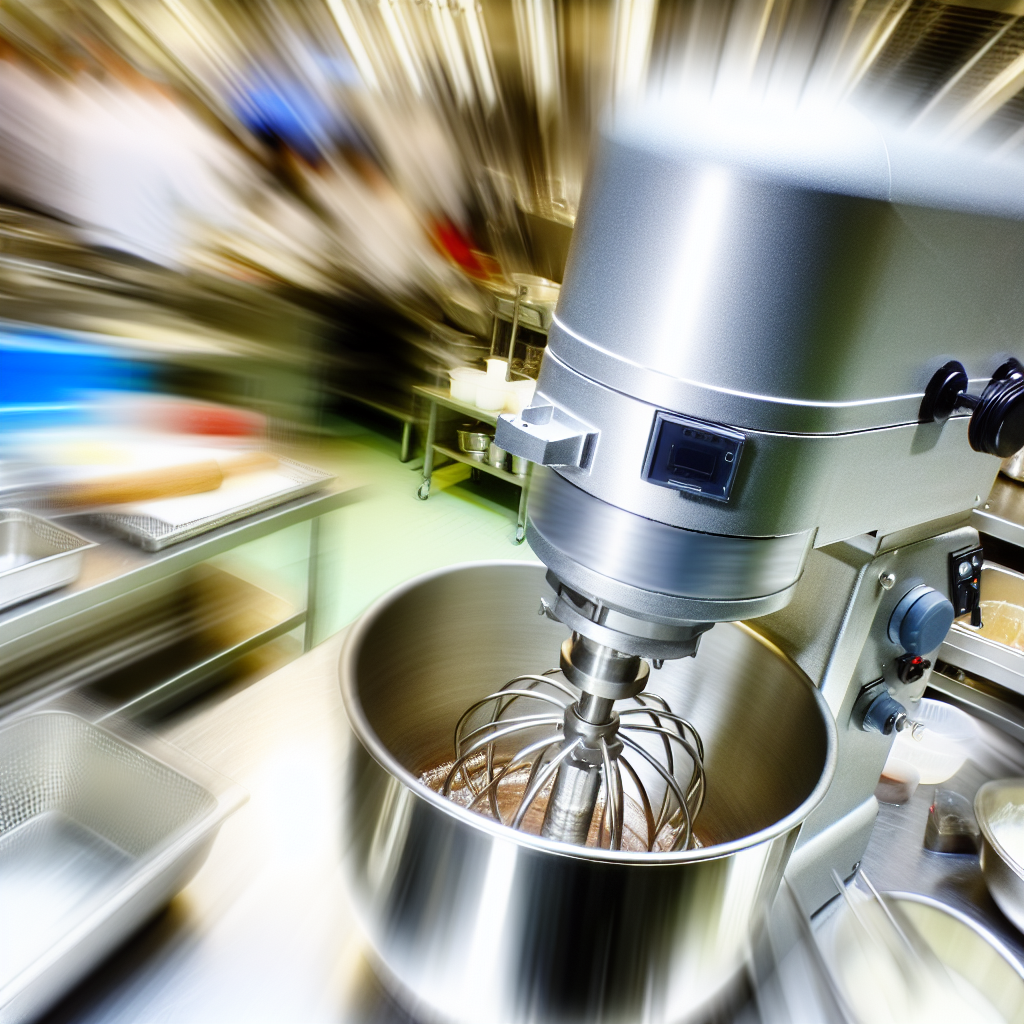
Understanding the Core Components of Industrial Planetary Mixers
Industrial planetary mixers are built on the same fundamental principles as their smaller countertop counterparts, but they are equipped with components designed for handling larger volumes and tougher materials. At the heart of these machines is the massive bowl, typically constructed from heavy-duty stainless steel. These bowls can hold hundreds of gallons of material and may be jacketed for heating or cooling during the mixing process.
Another critical component is the robust mixing arm, often hydraulically powered, which supports a range of heavy mixing attachments. These attachments include high-shear blades for intense mixing and emulsifying, sigma blades for kneading heavy doughs and viscous materials, double planetary blades for enhanced mixing action, and custom attachments tailored to specific material properties.
Advanced Features That Set Industrial Planetary Mixers Apart
Industrial planetary mixers come equipped with several advanced features that distinguish them from smaller models. One of the most notable is the powerful motors they use. These high-torque motors are capable of handling heavy loads and are designed for continuous operation, making them ideal for large-scale production.
Additionally, these mixers feature variable speed drives, allowing for precise control over the mixing speed to suit different materials and process stages. Automated controls, often managed by programmable logic controllers (PLCs), ensure consistency and repeatability in mixing cycles. Safety interlocks are also standard, protecting operators and preventing the mixer from being activated under unsafe conditions. Furthermore, hygiene design considerations, such as easy-to-clean surfaces and CIP (Clean-in-Place) systems, help maintain high sanitation standards.
The Working Principle: How Planetary Rotation Ensures Efficient Mixing

The effectiveness of industrial planetary mixers lies in their unique working principle, which combines planetary rotation with tool rotation. The mixing arm rotates around the bowl's central axis, driving the attached tools through the entire batch. Simultaneously, the mixing tools rotate on their own axis, creating shearing, kneading, or blending actions based on the attachment used.
This dual rotation mechanism results in intense mixing, ensuring that even very viscous or dense materials are thoroughly mixed. The combined planetary and tool rotations deliver consistent and efficient mixing, crucial for maintaining the quality and uniformity of the final product.
Diverse Applications Across Industries
Industrial planetary mixers are incredibly versatile and find applications across a wide range of industries. In the food processing sector, they are used for the large-scale production of doughs, batters, fillings, sauces, and more. Pharmaceutical companies rely on these mixers for blending active ingredients, excipients, and suspensions.
In the chemical industry, these mixers are essential for blending adhesives, sealants, paints, resins, and coatings. The cosmetics industry uses them for producing creams, lotions, and pastes, while the plastics industry employs them to incorporate additives and fillers into polymer compounds. Specialized models are even used for mixing solid rocket propellants and explosives, showcasing their adaptability to various industrial needs.
Key Advantages of Using Industrial Planetary Mixers
One of the primary advantages of industrial planetary mixers is their high capacity, which enables them to handle large volumes of material, thereby increasing production efficiency. Their versatility is another significant benefit, as they can be adapted to various industries and material types through the use of interchangeable attachments.
Furthermore, the precise control offered by programmable controls ensures consistent mixing quality, which is vital for maintaining product standards. Lastly, their robust construction, designed for heavy-duty, continuous use, makes them a reliable and durable choice for any industrial setting.


